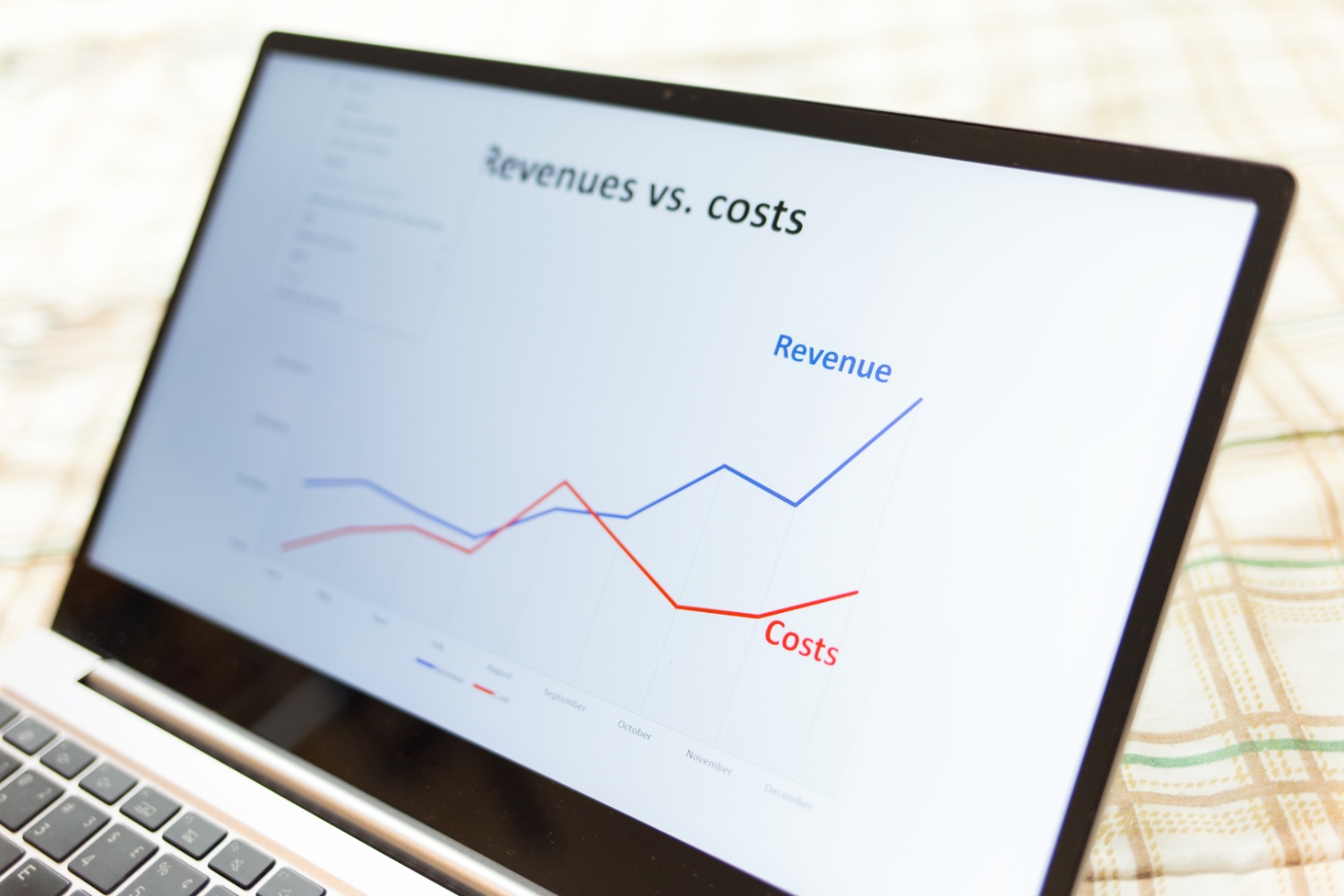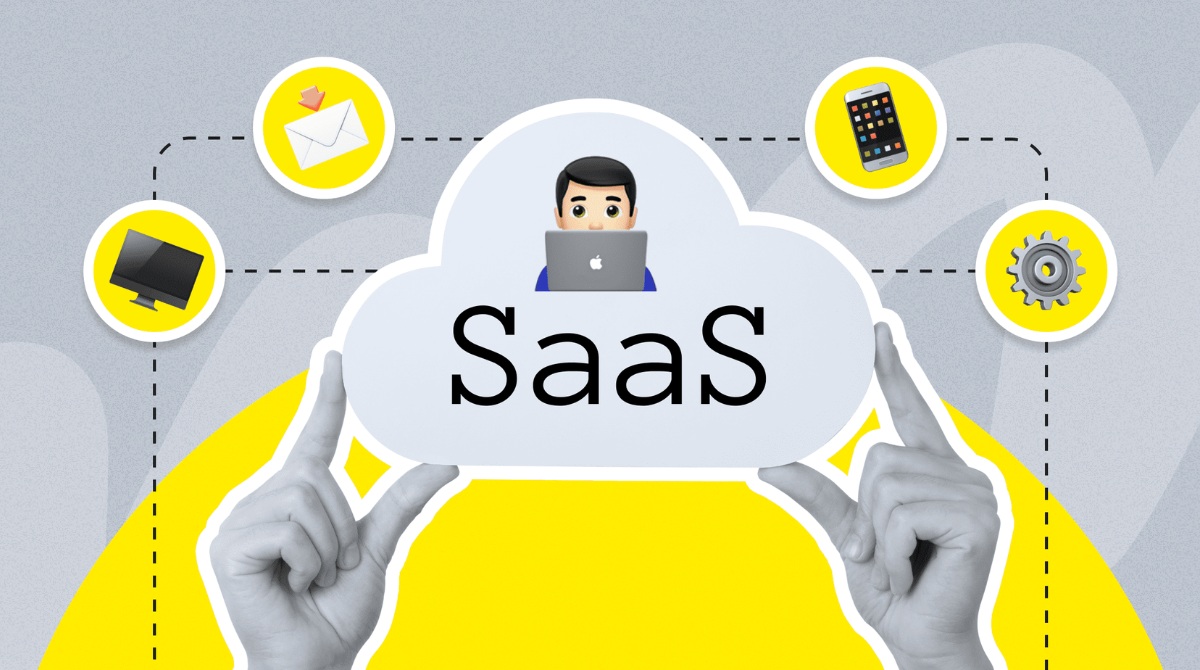Introduction
Welcome to the world of Software as a Service (SaaS) companies, where customer retention is key to success. As a SaaS company owner or marketer, one of the metrics you need to closely monitor is the churn rate. Churn rate refers to the percentage of customers or subscribers who cancel or discontinue their subscription within a given time period.
The churn rate is a significant indicator of the health and sustainability of your business. A high churn rate can be detrimental, not only financially, but also in terms of market reputation and future growth prospects. On the other hand, a low churn rate indicates that customers are satisfied with your product or service and are likely to continue their subscription for a longer period.
In the competitive world of SaaS, where customer acquisition costs can be high, retaining existing customers becomes paramount. After all, it is more cost-effective to retain customers than to acquire new ones. That’s why understanding and managing your churn rate is crucial for the long-term success of your SaaS business.
But why exactly is the churn rate important for SaaS companies? Well, let’s dive deeper to understand its significance and the various factors that influence it.
What is churn rate?
Churn rate, also known as customer attrition rate, is the metric that measures the percentage of customers or subscribers who cancel or terminate their subscription within a given period of time. It is an essential concept in the SaaS industry, as it directly impacts the stability and growth of a company.
To calculate churn rate, you divide the number of customers who churned during a specific time period by the total number of customers at the beginning of that period and multiply it by 100. This will give you the churn rate as a percentage.
Churn rate can be further categorized into two types: voluntary churn and involuntary churn. Voluntary churn refers to customers who actively decide to cancel their subscription, often due to dissatisfaction with the product or service, financial constraints, or no longer requiring the solution. Involuntary churn, on the other hand, occurs when customers are unintentionally lost due to reasons such as failed payments, credit card expirations, or hardware failures.
Now, it’s important to note that not all customers who sign up for a SaaS product will stay indefinitely. Some level of churn is inevitable and even expected. However, consistently high churn rates can cause significant revenue loss and hinder the company’s ability to grow and scale.
Monitoring churn rate provides valuable insights into the overall health of your customer base and helps identify areas that require attention. By understanding why customers are leaving, companies can develop strategies to reduce churn and retain valuable customers.
Overall, churn rate is a critical metric that directly reflects the success of a SaaS company in retaining its customers. By continually analyzing and addressing churn, businesses can identify opportunities for improvement in their product, customer service, and overall customer experience.
Why is churn rate important for SaaS companies?
The churn rate is a vital metric for SaaS companies because it directly impacts the financial health and growth potential of the business. Here are several reasons why monitoring and reducing churn rate is crucial:
- Revenue Loss: When customers churn, the company loses their recurring revenue. High churn rates can quickly erode profits and hinder the ability to invest in product development, marketing, and customer acquisition.
- Customer Lifetime Value: The longer a customer stays with a SaaS company, the higher their lifetime value. By reducing churn and increasing customer retention, SaaS companies can maximize the revenue generated from each customer over their lifetime.
- Customer Acquisition Costs: Acquiring new customers is typically more expensive than retaining existing ones. High churn rates force SaaS companies to continually invest in customer acquisition efforts, increasing marketing costs and eroding profitability.
- Market Reputation: A high churn rate can damage a SaaS company’s reputation within the industry. It may indicate underlying issues with the product, customer service, or value proposition. This, in turn, can hinder future growth opportunities and make it more challenging to attract new customers.
- Growth Potential: SaaS companies with low churn rates have a higher growth potential. By retaining and upselling existing customers, companies can generate a stable revenue stream and allocate resources towards acquiring new customers and expanding the customer base.
- Customer Feedback and Improvement Opportunities: Churn rate provides valuable insights into customer behavior and satisfaction levels. Analyzing the reasons for churn allows SaaS companies to identify areas of improvement, enhance product features, and provide a better overall customer experience.
By understanding the importance of churn rate and its impact on the overall business, SaaS companies can gain a competitive edge, improve financial stability, and create long-term customer relationships. The ability to effectively manage and reduce churn allows companies to focus on growth strategies, differentiate themselves in the market, and drive sustainable success.
Factors influencing churn rate
Churn rate in SaaS companies can be influenced by various factors. Understanding these factors is essential for developing effective strategies to reduce churn and improve customer retention. Here are some key factors that can impact the churn rate:
- Product/Service Fit: If the product or service does not meet the customers’ expectations or fails to solve their pain points, they are more likely to churn. Ensuring that the offering aligns with customer needs and continuously improving it based on user feedback can help reduce churn.
- User Onboarding: The onboarding process plays a crucial role in setting the right expectations and helping users get value from the product. If the onboarding is complicated, lacks proper guidance, or fails to demonstrate the value proposition effectively, it can contribute to a higher churn rate.
- Customer Support: Poor customer support can lead to frustration and dissatisfaction, causing customers to cancel their subscription. Responsive and helpful support teams that address customer issues promptly and effectively can help foster customer loyalty and reduce churn.
- Competitive Landscape: In a highly competitive market, where alternatives are readily available, customers may switch to a competitor offering if they perceive better value or experience. Monitoring the competitive landscape and continuously innovating to stay ahead can help minimize churn.
- Pricing and Value Perception: If customers feel that the price they are paying does not align with the value received, they may churn. Regularly assessing pricing models, offering flexible plans, and effectively communicating the value proposition can help mitigate this factor.
- Customer Engagement: Lack of engagement and interaction with the product or service increases the likelihood of churn. Companies can encourage customer engagement through personalized communication, educational content, and proactive outreach.
- Customer Satisfaction: Poor overall customer satisfaction, including factors like user experience, product reliability, and performance, can drive customers away. Regularly monitoring customer satisfaction levels and taking necessary actions to address any gaps is crucial to minimize churn.
- Renewal Process: A complex or confusing renewal process can cause friction and lead to unintended churn. Simplifying the renewal process and proactively communicating with customers about renewal arrangements can help increase retention.
Understanding and monitoring these factors can provide valuable insights into the sources of churn and guide efforts to reduce it. By addressing these factors through continuous improvement, effective communication, and delivering value, SaaS companies can enhance customer satisfaction, increase retention, and ultimately reduce churn.
Benchmarks and industry standards
When it comes to churn rate, it can be helpful to have benchmarks and industry standards as a point of reference to evaluate the health of your SaaS business. However, it’s important to note that churn rate benchmarks can vary depending on factors such as the industry, target market, pricing model, and company size. Here are some benchmarks to consider:
- Industry Averages: Different industries may have different expectations for churn rates. For example, SaaS businesses in highly competitive markets or with lower switching costs may have higher churn rates compared to those in niche markets.
- Company Stage: Churn rate benchmarks can also vary based on the stage of your company. Early-stage startups may have higher churn rates, while more established companies may have lower churn rates due to brand recognition and customer loyalty.
- Revenue Model: SaaS companies with different revenue models (e.g., monthly subscriptions, annual contracts, usage-based billing) may have varying churn rate benchmarks. For example, companies with monthly subscriptions may experience higher churn rates compared to those with annual contracts.
- Customer Segments: Churn rates may differ across different customer segments. B2B SaaS companies may have lower churn rates compared to B2C companies due to longer contract durations and deeper customer relationships.
While it’s useful to have these benchmarks as a starting point, it’s crucial to remember that every business is unique. Your focus should be on improving your own churn rate rather than aiming for an arbitrary industry standard. It’s more valuable to track and monitor your own historical churn rate trends and set internal targets based on your specific circumstances.
Additionally, it’s essential to consider other performance metrics alongside churn rate. For example, analyzing customer acquisition rate, customer lifetime value, and customer satisfaction metrics can offer a holistic view of your business’s health and customer success.
By regularly benchmarking and tracking your churn rate against your own historical data and considering industry benchmarks that align with your business, you can gain valuable insights and identify areas where improvements can be made. Ultimately, the goal is to strive for continuous improvement in customer retention and overall business performance in relation to your unique circumstances.
What is a good churn rate for SaaS?
Determining what constitutes a “good” churn rate for SaaS companies can be challenging as it can vary depending on various factors, including industry, target market, revenue model, and company size. However, in general, a lower churn rate is considered favorable as it indicates a higher level of customer satisfaction and retention. So, what can be considered a good churn rate?
For most SaaS companies, an annual churn rate of less than 10% is often seen as a benchmark for success. This means that less than 10% of customers cancel or discontinue their subscription in a year. However, it’s important to note that what may be acceptable for one company or industry may not be for another.
It’s essential for SaaS companies to benchmark their churn rate against their own historical data and industry peers. Tracking and analyzing trends in churn rate over time can provide valuable insights into the effectiveness of retention strategies and help set appropriate targets for improvement.
Furthermore, the nature of the product or service can also influence what is considered a good churn rate. Some SaaS companies may have higher churn rates due to factors like lower switching costs, shorter contract durations, or a freemium model. These factors should be taken into account when evaluating churn rate benchmarks.
Ultimately, the goal for SaaS companies should be to continuously work towards reducing churn and improving customer retention, regardless of the specific benchmark. By understanding the factors that influence churn rate, continually monitoring customer feedback, and implementing targeted retention strategies, companies can strive to achieve a churn rate that aligns with their unique circumstances and industry standards.
Strategies to reduce churn rate
Reducing churn rate is crucial for the long-term success and sustainability of SaaS companies. Here are some effective strategies to minimize churn and improve customer retention:
- Improve Onboarding Process: Streamline the onboarding experience to help new customers understand the value of your product or service and ensure they can quickly start using it effectively. Provide clear documentation, tutorials, and responsive support during the onboarding phase.
- Enhance Customer Support: Invest in exceptional customer support to address issues, provide timely assistance, and resolve challenges. Prompt and personalized support can significantly impact customer satisfaction and their decision to stay with your company.
- Continuously Improve Customer Experience: Regularly collect and analyze customer feedback to identify pain points and areas for improvement. Make product enhancements, UX/UI refinements, and implement features that directly address customer needs and enhance the overall experience.
- Offer Personalized Engagement: Segment your customers based on behavior, preferences, and engagement levels. Tailor your communication and engagement efforts to each segment, offering targeted recommendations, upsell opportunities, and proactive outreach to keep them engaged and satisfied.
- Reward and Retain Loyal Customers: Implement loyalty programs, special offers, or exclusive access to new features for long-term customers. Show appreciation for their loyalty and make them feel valued, encouraging them to continue using your product or service.
- Proactive Renewal Management: Prioritize proactive communication with customers approaching their renewal dates. Provide clear renewal options, gather feedback on their experience, and address any concerns or questions to ensure a seamless renewal process.
- Monitor Customer Success Metrics: Track key customer success metrics such as product usage, adoption rates, and feature utilization. Identify customers who may be at risk of churning and proactively reach out with targeted interventions and support to retain their business.
- Invest in Customer Education: Offer educational resources such as tutorials, webinars, and knowledge bases to help customers maximize the value of your product or service. By empowering them with knowledge and demonstrating the full potential of your offering, you can increase customer retention.
- Regularly Communicate Updates: Keep customers informed about product updates, new features, and enhancements. Regularly communicate relevant updates through newsletters, blog posts, or in-app notifications to engage customers and demonstrate the ongoing value they receive as subscribers.
Implementing a combination of these strategies and continuously refining them based on customer feedback and data analysis can greatly reduce churn rates. It’s important to remember that churn is an ongoing concern, and active measures should be taken to retain existing customers and foster long-term relationships.
Conclusion
In the dynamic and competitive world of SaaS companies, understanding and reducing churn rate is essential for long-term success. Churn rate directly impacts revenue, customer retention, and market reputation. By actively monitoring and addressing churn rate, SaaS companies can improve their financial health, customer satisfaction, and growth prospects.
In this article, we explored what churn rate is and why it is important. We examined the factors that influence churn rate, such as product-market fit, customer support, and pricing. Additionally, we discussed benchmarks and industry standards as a reference point for evaluating churn rate performance.
Moreover, we explored strategies to reduce churn rate, including improving onboarding processes, enhancing customer support, continuously improving the customer experience, and implementing personalized engagement strategies. These strategies, coupled with proactive renewal management, monitoring customer success metrics, and investing in customer education, can significantly impact customer retention.
It’s important to note that while benchmarks and industry standards provide guidance, each SaaS company is unique. Setting internal targets and continuously improving churn rate in the context of your specific circumstances is crucial.
By implementing effective churn reduction strategies and continuously analyzing customer feedback and data, SaaS companies can minimize churn, increase customer loyalty, and drive sustainable growth.
Remember, reducing churn is an ongoing effort that requires a customer-centric mindset, continuous improvement, and a data-driven approach. By prioritizing customer satisfaction, delivering value, and fostering long-term relationships, SaaS companies can thrive in a competitive market and position themselves for success.

























